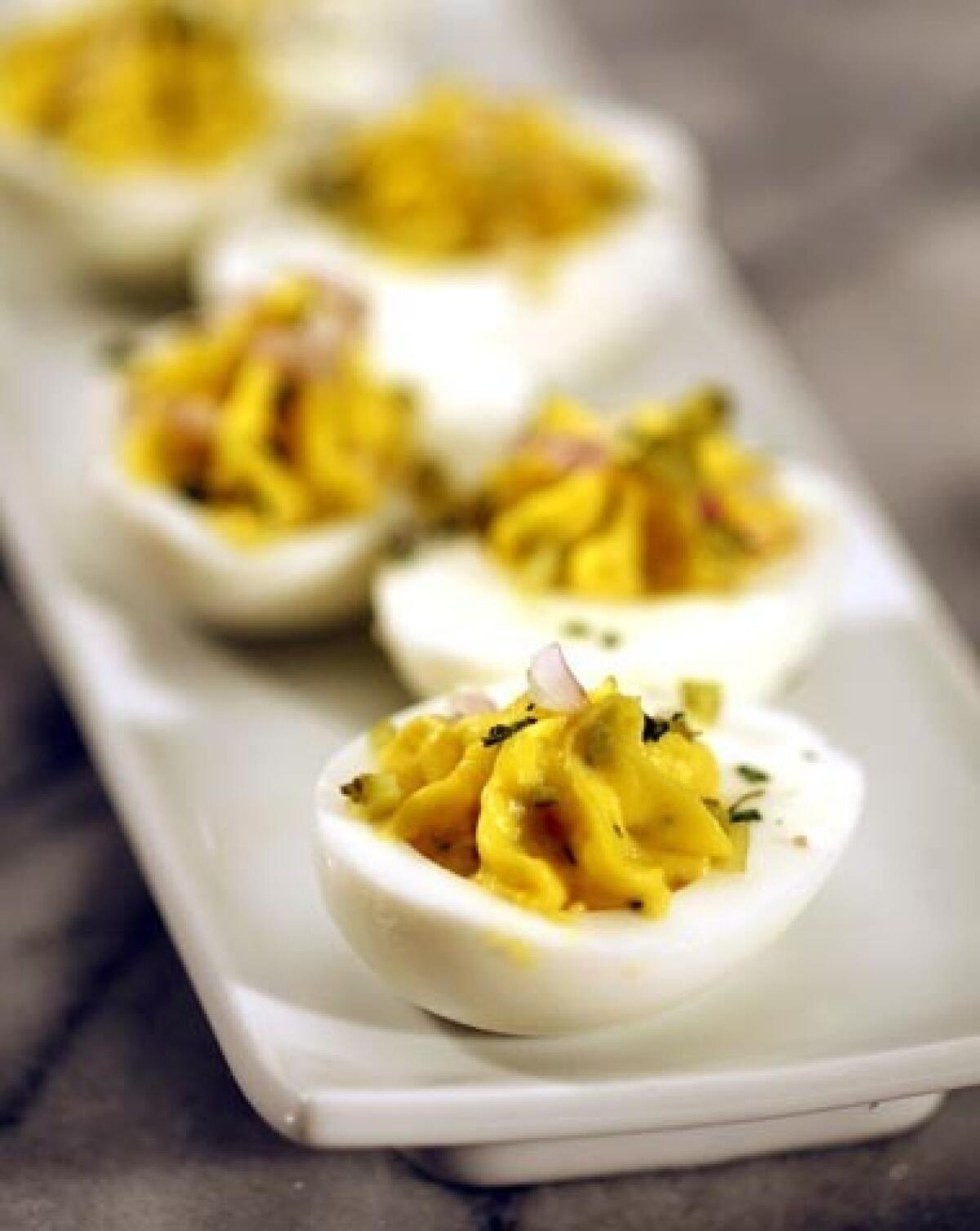Deviled eggs: Easy to make and fun to experiment with

- Share via
You always know where to find me at a picnic or potluck: I’ll be that guy standing by the deviled eggs, probably with my elbows out, the better to fend off all competitors. Sorry, I know it’s rude, but these little things are so delicious. And until recently, they were one of those foods that were only served by the homiest of home cooks. To be honest, I can’t remember the last time I made them myself.
All that changed a few weeks ago when I had dinner at Restaurant 1833 in Monterey. It’s the restored Stokes Adobe (named not for its address but for the year in which it was built). The restaurant is a series of dark, atmospheric rooms, perfect for cocktails (the barrel-aged Negroni was terrific), and there’s a whole section of the menu devoted to appropriate snacks.
And right at the top of the list are deviled eggs. The kitchen changes up the flavorings frequently, but the night I was there they were served with smoked paprika. Not exactly church-supper fare but delicious nonetheless, and a genius finger food.
It turns out deviled eggs have now become something of an official “thing” in restaurants — part of the gastropub movement. You can find quite good ones at Susan Feniger’s Street, Auntie Em’s, Le Grande Orange, Haven, Jar, Josie, Freddy Small’s, Parish — you’re getting the picture. But they couldn’t be simpler to make yourself.
The first step in making great deviled eggs is making great hard-boiled eggs. In fact, after that, there’s not a lot to it. The best way to make hard-boiled eggs is to arrange the eggs in a single layer in a pan. Cover with them water. Bring them to a boil over high heat. Cook 1 minute, then remove from the heat and let them stand at least 15 minutes.
That makes very good eggs, but the problem has always been that they’re tough to peel (the shells want to stick to the whites). Solve that by draining the cooked eggs and rattling them around in the pan a little to crack the shells. Then cover them with ice water and let them chill for at least 10 minutes. Even longer is better. Now the eggs should slip free of their shells fairly easily.
Once the eggs have been shelled, deviled eggs are remarkably simple to make and really adaptable to whatever way your whims may blow. Scoop the yolks from the whites, mash the yolks fine with a fork and beat in mayonnaise. Now you’re ready to play.
Generally, I find that about 1/4 cup of mayonnaise for every half-dozen egg yolks gives the best combination of taste and texture. More would be creamier but milder in flavor, less would be denser but more flavorful. (Here’s a trick: If you want overstuffed eggs, toss out a couple of the hard-cooked whites, increasing the proportion of yolk.) About 1/4 teaspoon of salt is usually enough to season, but if you’re including salty ingredients, such as capers, anchovies, smoked salmon or, ahem, caviar, you’ll probably want to hold off.
The first deviled egg I experimented with was a kind of inside-out sauce gribiche: shallots, tarragon and finely diced cornichons. I also tried a variation on the Restaurant 1833 egg. Unfortunately, my memory of what exactly was in it stopped at smoked paprika (blame the Negroni). But capers seemed like a natural, and a dash of cumin too, to add some bottom to the paprika flavor. Both variations were perfect on a picnic with a chilled rosé.
But the very best thing about making your own deviled eggs? There’s no competition for eating them.
More to Read
Eat your way across L.A.
Get our weekly Tasting Notes newsletter for reviews, news and more.
You may occasionally receive promotional content from the Los Angeles Times.







